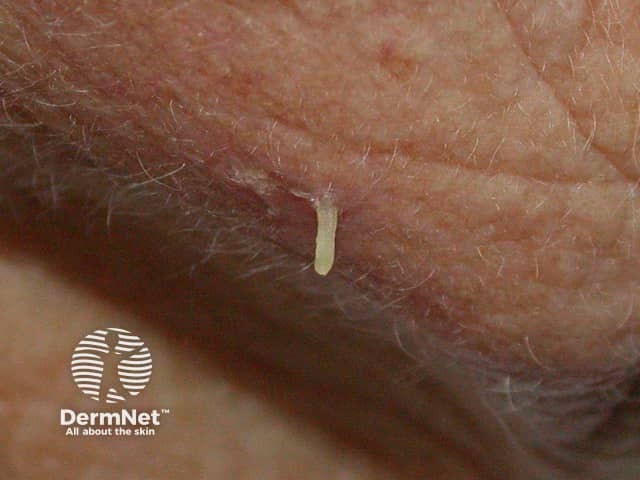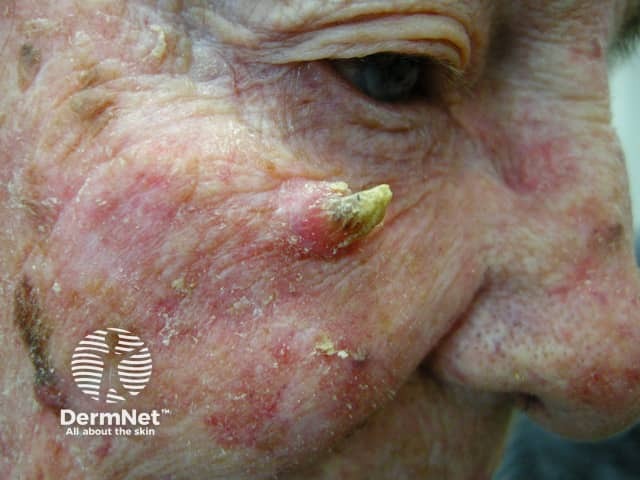Main menu
Common skin conditions

NEWS
Join DermNet PRO
Read more
Quick links
Author: Dr Tina Tian, Medical Oncology Registrar, Hawke's Bay Hospital, Hastings, New Zealand, 2013.
Introduction Demographics Causes Clinical features Diagnosis and investigation Treatment
A cutaneous horn (cornu cutaneum) is a hard conical projection from the skin, made of compact keratin. They are so named as they resemble an animal’s horn. They arise from benign, premalignant or malignant skin lesions.

Cutaneous horn

Cutaneous horn

Cutaneous horn
See more images of cutaneous horns ...
Around half of horns have a benign base, and half are premalignant or malignant. The most common underlying lesions are seborrhoeic keratosis, viral warts (due to human papillomavirus), actinic keratosis, and well-differentiated squamous cell carcinoma (associated with exposure to the sun and other sources of UV radiation).
Cutaneous horns are usually asymptomatic. They can be injured causing pain and inflammation.
Whilst no certain features can confidently confirm or exclude malignant lesions, malignant lesions are more common in older patients and in males compared to females. Squamous cell carcinoma is also likely if the horn has the following features:
On histology, there is a thickening of the stratum corneum or hyperkeratosis. Orderly horizontal parallel layers of keratin are associated more with benign lesions. Rapidly growing malignant lesions exhibit more erratic growth. Acanthosis is often noted. The base of the lesion shows features of the underlying lesion.
Skin conditions associated with cutaneous horns |
|
|---|---|
Benign |
Premalignant or malignant |
Cutaneous horns are usually excised with appropriate margins, dependent of the nature of the lesion.